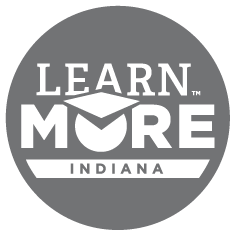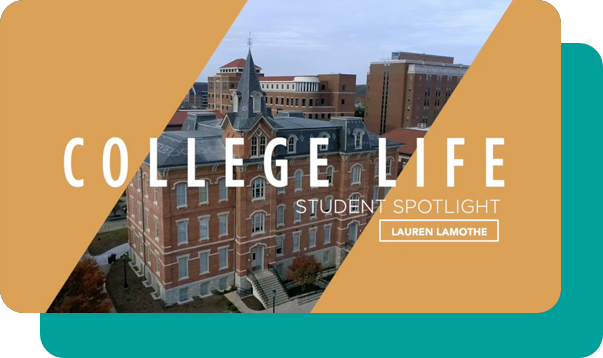College Discovery
What is College?
There are many options and education pathways for Indiana students after high school such as apprenticeships, associate degrees, trade programs, bachelor’s degrees or an advanced degree. College isn’t just about earning a four-year degree on campus. Indiana’s institutions provide education opportunities that meet the needs of all people at all stages of their lives including short-term, online and part-time options.
Why should you go to college?
Degree Options
Does your dream job require an apprenticeship, associate degree, trade program, bachelor’s degree or an advanced degree?
Even if you’ve decided on your ideal career, there’s still so much to plan for. Colleges have different types of degrees and lots of paths to success.
See below for descriptions of the most common degree types.

This is the invisible first accordion item. Do not remove this or the functionality will be lost.
Workforce certificates can be earned by completing the requirements of an association for a particular trade, such as plumbing, security or certain types of computer technology. Often a certification takes only one year to complete if you go to school full time. Sometimes, a certificate is earned as part of an apprenticeship. With help from the Workforce Ready Grant, you can potentially get a workforce certificate for free.
Associate degrees typically take two years to complete if you go to school full time. An associate degree can open the door to a wide variety of careers, ranging from business and biotechnology to education and engineering.
Associate of Arts (A.A.) or Associate of Science (A.S.) degrees are granted to students who complete two-year programs of study. Associate of Applied Science (A.A.S.) degrees are awarded to students who complete two-year technical or vocational programs, designed to train students with the skills they need for specific careers like computer information systems or fashion studies. These programs often require an internship.
Bachelor’s degrees generally take four years to complete if you go to school full time. B.A. (Bachelor of Arts) degrees are often found in the liberal arts. They generally require courses in humanities, math, English, sciences, social sciences and language. B.S. (Bachelor of Science) degrees prepare people for careers in areas such as accounting, engineering and education. Like the B.A., the B.S. degrees require general courses in math, English, sciences and social sciences, but usually fewer courses in the humanities.
Master’s degrees take your education to a higher level than a traditional degree. Participation in a master’s degree follows your bachelor’s degree and usually requires two extra years of full-time study with more tests and classes. For some fields, like law, a master’s degree is a professional degree that you need to enter into the industry. Most graduates with professional degrees are able to enter the workforce equipped with the knowledge necessary for the industry they’ll be working in.
The time to earn a doctorate degree varies greatly by program and by the student’s motivation. Most doctorate students begin by taking classes, and end their studies by writing a dissertation or participating in a residency program. Many fields, such as history or English, require a dissertation – lengthy, original research, kind of like a book, that defends a student’s stance on a given subject and usually takes two or more years to complete. A residency allows a student to practice their skills in a controlled setting. For example, residencies for medical doctors are three or more years and take place in a hospital.
Which college should I attend?

We’ve broken down the main requirements, timelines and steps for you. Learn about college entrance exams, steps for applying...
The college application process can seem overwhelming at first. We’ve broken down the main requirements, timelines and steps for you. Learn about college entrance exams, steps for applying, letters of recommendations, application fees and waivers, and more on our “How To Apply To College” page. Click "Applying to College" to get started.

We provide a variety of tools and resources to connect you to potential careers so that you can make the best career decision based on...
Choosing a career doesn’t have to be overwhelming. To make this process a little easier, we provide a variety of tools and resources to connect you to potential careers so that you can make the best decision based on your strengths and interests.
If you’re not sure what you want to do after high school, visit our Career Discovery page. You’ll get access to quizzes and assessments to help define your path.
Already have a career path in mind? You’ll find resources on building your resume, interviewing and gaining experience to get your foot in the door. Click "Career Discovery" to get started.
Indiana has approximately 60 colleges and universities. But which one is right for you?
Indiana has approximately 60 colleges and universities. But which one is right for you? The College Navigator tool can help you find the right college for your goals. Click "College Navigator" to get started.

Learn how to create a college savings plan or get help paying for college via financial aid or scholarships...
Learn how to create a college savings plan or get help paying for college via financial aid or scholarships by visiting our Affording College page. Click "How Do I Afford College?" to get started.

The Indiana College Core is a block of 30 credit hours of general education, college-level coursework which can be transferred between all Indiana public colleges and universities and some private ones...
The Indiana College Core is a block of 30 credit hours of general education, college-level coursework which can be transferred between all Indiana public colleges and universities and some private ones. The Indiana College Core helps students save time and money toward their higher education when earned in high school. You can essentially earn a full year of your general education credits for less than $750 (potentially saving you and your family thousands of dollars) and helping you graduate on-time or even early from college. Click "Indiana College Core" to get started.
College Go! is a yearly campaign dedicated to helping students find the right college to fit their personalities and interests...
College Go! is a yearly campaign dedicated to helping students find the right college to fit their personalities and interests. College GO! gives students options to research schools and visit campuses, and then guides them through the steps of preparing and applying for college.
Save the Dates for This Year’s College GO!
College GO! — September – November
College Application Week — September 25-29
College Application Week is part of College GO! And is a national initiative of the American College Application Campaign (ACAC). The goal is to help high school seniors navigate the college admissions process and ensure each student submits at least one admissions application. Many Indiana universities join in the celebration by taking away their college application fees for a day so that students can apply for free.
Why Apply Day — September 15
Why Apply Day marks a 24-hour social media initiative to bring awareness to all the reasons why students should attend college. Educators, college alumni, current students, community partners and industry leaders are encouraged to join us in celebrating #WhyApplyDay by sharing their reasons “Why” by printing our poster and posting a picture holding their written reason. The hashtags #WhyApply and #CollegeGO are used for this movement. Click "College GO!" to get started.



